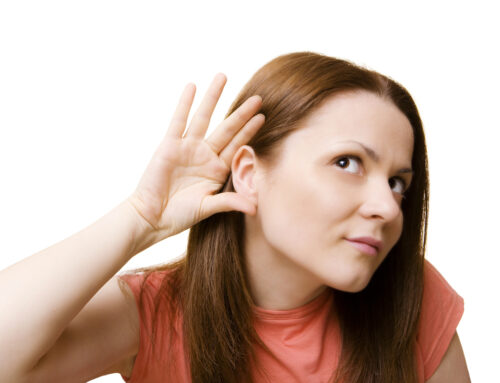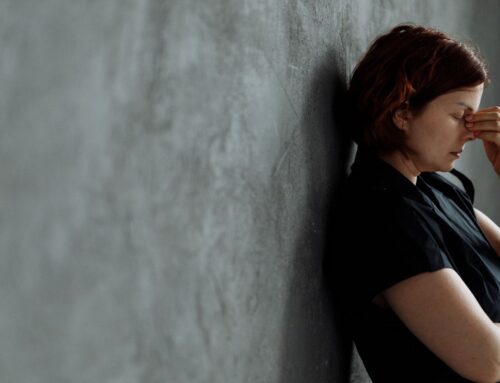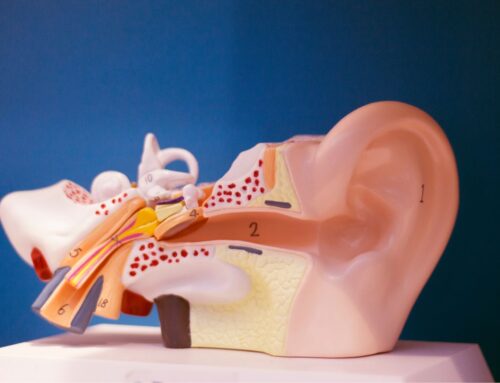How Do We Maintain Balance?
Balance is what allows us to navigate space without falling and is central to our spatial awareness. Have you ever thought about how we maintain balance? Well, the vestibular system is the sensory system for balance and it is housed in the inner ear!
There are several issues people can experience with their vestibular system, resulting in issues with balance and producing symptoms like vertigo. According to the National Institute on Deafness and Other Communication Disorders, about 40% of people in the U.S. will experience dizziness and/or balance-related challenges during their lifetime.
How does the vestibular system work?
The vestibular system consists of semicircular canals, otolithic organs, and the cochlea as well as sensory cells that work together to communicate information about the movement to the brain. Semicircular canals form loops:
- First canal: senses up and down motions
- Second canal: senses side-to-side movements
- Third canal: senses tilting movements
These canals are filled with fluid and tiny sensory cells that send signals to the brain (via the vestibulocochlear nerve) about movement and positionality. This information coupled with visual and muscle inputs allows us to maintain balance and move safely through space. This process detects and communicates movement, and stabilizes our movements and position as well as posture. Balance disorders occur when this system and its components are impacted in ways that prevent them from functioning effectively.
What are the symptoms of a balance disorder?
Several underlying conditions can cause a balance disorder. Symptoms can vary and be experienced differently. Common symptoms include:
- Short or long bouts of dizziness or vertigo
- Lightheadedness, feeling faint
- Feeling like you are going to fall
- Disorientation
- Fatigue, headaches, difficulty concentrating
- Blurred vision
- Nausea, vomiting
These symptoms can be experienced intermittently or chronically. Balance disorders can take a toll on wellness and the capacity to navigate everyday life with ease.
What are common balance disorders?
There are numerous (over a dozen) balance disorders. A few of the most common include:
- Meniere’s Disease: this inner ear disorder occurs when there is an accumulation of fluid in the inner ear. This fluid produces inflammation which impacts the vestibular system. The exact causes of Meniere’s disease are unknown but experts suggest that it can be caused by viral infections, autoimmune conditions, or constricted blood vessels. This can produce various symptoms including vertigo, dizziness, and hearing loss.
- Benign Paroxysmal Positional Vertigo (BPPV): this is a specific type of vertigo that is also known as positional vertigo which is triggered when head position changes. BPPV is caused by issues with the otolith organs in the inner ear’s vestibular labyrinth. These organs consist of fluid and calcium carbonate which can become dislodged by head movements. Calcium carbonate becoming dislodged and entering one of the semicircular canals affects the brain receiving information about movement and causes symptoms like vertigo. BPPV can be caused by head and neck injuries as well as aging.
-
- Migraine-Associated Dizziness: some people who have migraines can experience dizziness with or without an associated headache. The intensity of the dizziness can vary and it can be short to long-lasting.
- Labyrinthitis: this is an infection that occurs in the inner ear and produces inflammation Labyrinthitis is typically caused by an upper respiratory infection like the flu.
- Vestibular Neuritis: the vestibular nerve carries information about motion and balance to the brain. Vestibular neuritis occurs when the nerve experiences inflammation which can be caused by a viral infection.
These balance disorders can produce symptoms that are unpleasant to experience and that impact wellness as well as safety. If you experience any symptoms, it is important to be assessed by a specialist.
How are balance disorders treated?
The underlying cause and type of balance disorder inform the type of treatment that can effectively address symptoms. Treatment options can include the following:
- Medications: this includes antibiotics to clear any bacterial or viral infections contributing to balance issues. Additional medications could be prescribed to alleviate symptoms like dizziness and nausea.
- Vestibular Rehabilitation Therapy (VRT): this type of therapy involves performing specific exercises that work on ways to perform certain movements (with the eyes, head, and body) without triggering vertigo.
- Canalith repositioning: this treatment is used to address BPPV and involves putting the patient’s head in specific positions to reposition dislodged crystals in the inner ear.







Leave A Comment